How to keep moving with an epidural
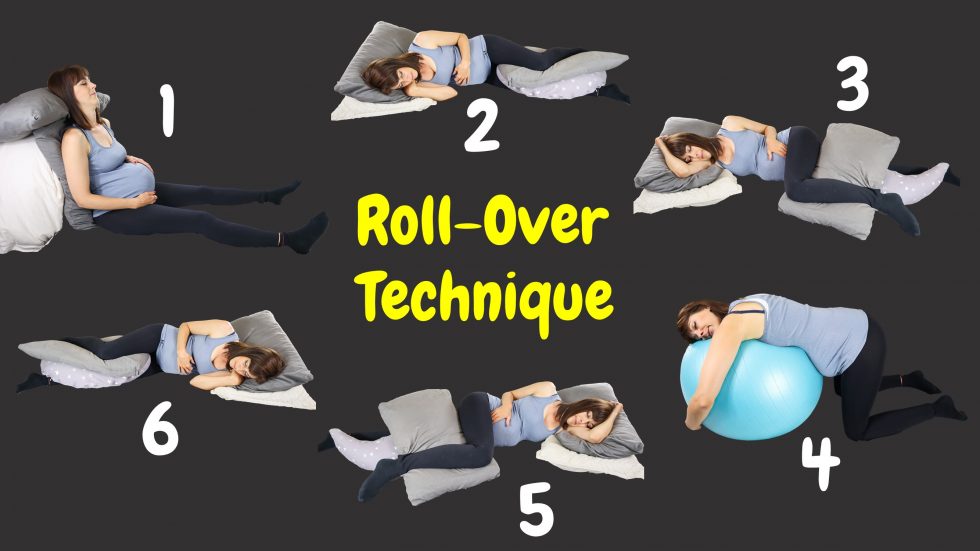
This blog posts adds to the video “8 reasons why labor can stall and what to do about it”. In that video, among others, we explain the “roll-over technique from Penny Simkin (see sources below) which allows a woman to keep moving even when she is confined to bed.
There can be many reasons why a woman is confined to bed during labor, like for example, an epidural.
In this blog post, we would like to give you some more information on the roll-over technique and how you can increase the effect.
In order to fully understand this blog post, we recommend watching our video on youtube first. We explain the roll-over technique from minute 11:25 onwards.
How to increase the Effect
There is a simple way to increase the effect of the roll-over technique by using a peanut ball. Please note that by “increasing the effect”, we mean that you make it even easier for your baby to descend in your pelvis.
A peanut ball can be used for all positions expect from 2 and 6, which are the side-lying positions.
How to use a Peanut Ball for the Roll-over Technique
For both semiprone positions, you would use the peanut ball to rest your upper leg on it:
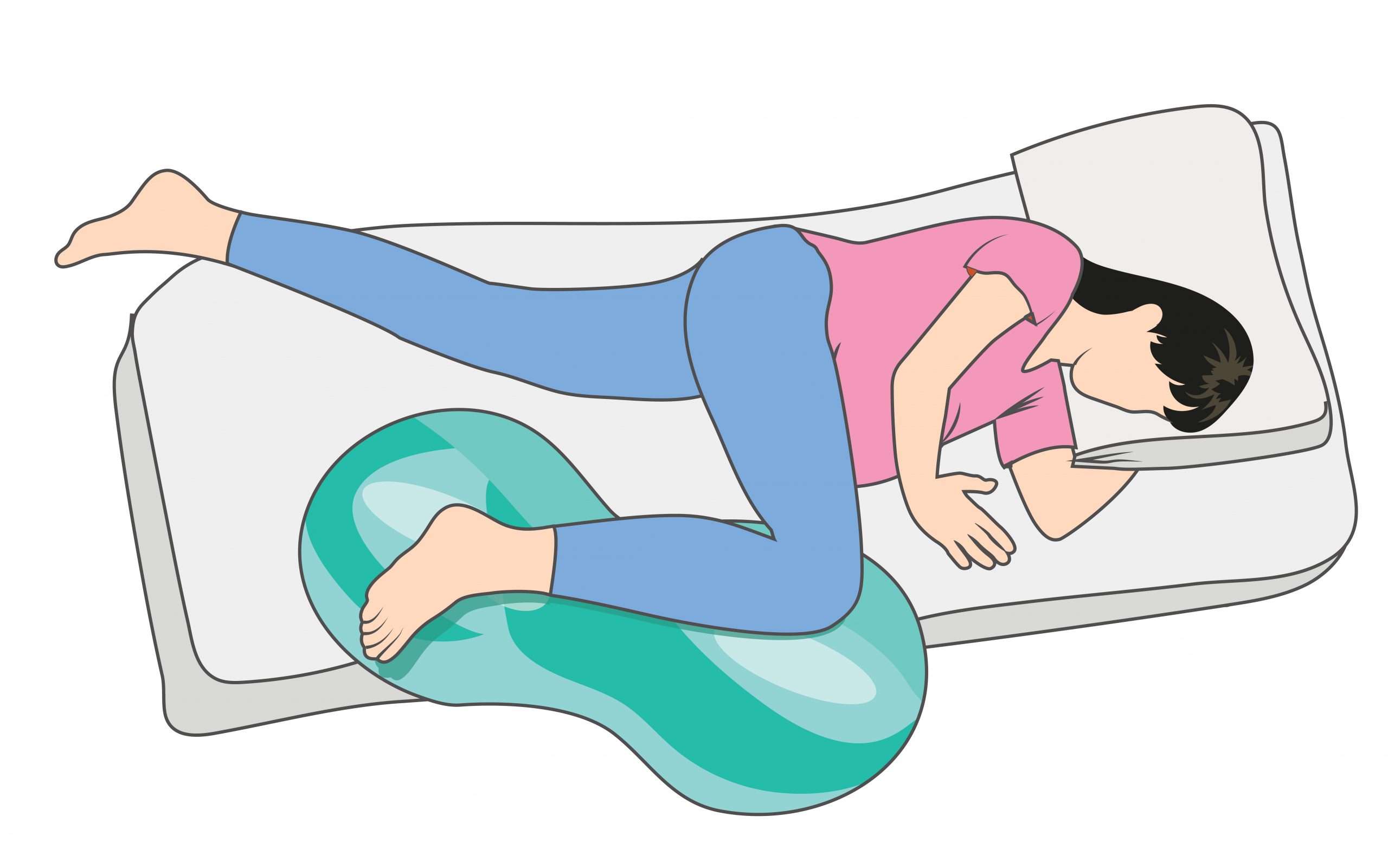
Please note that you need the assistance of your midwife in order to do this because she needs to determine the appropriate size of the peanut ball for your particular situation!
For position number 4 (hands & knees) you would simply use a peanut ball instead of a birthing ball. When you do, use the ball lengthways with the narrower end close to your belly!
The shape of the peanut ball is better suitable to support the woman in that position than a birthing ball due to its unique shape.
Because of that, most women prefer a peanut ball over a birthing ball when adopting this position. However, we recommend trying both in order for you to see which ball you find more comfortable!
Finally, it can also make sense to use a peanut ball to support the first position:
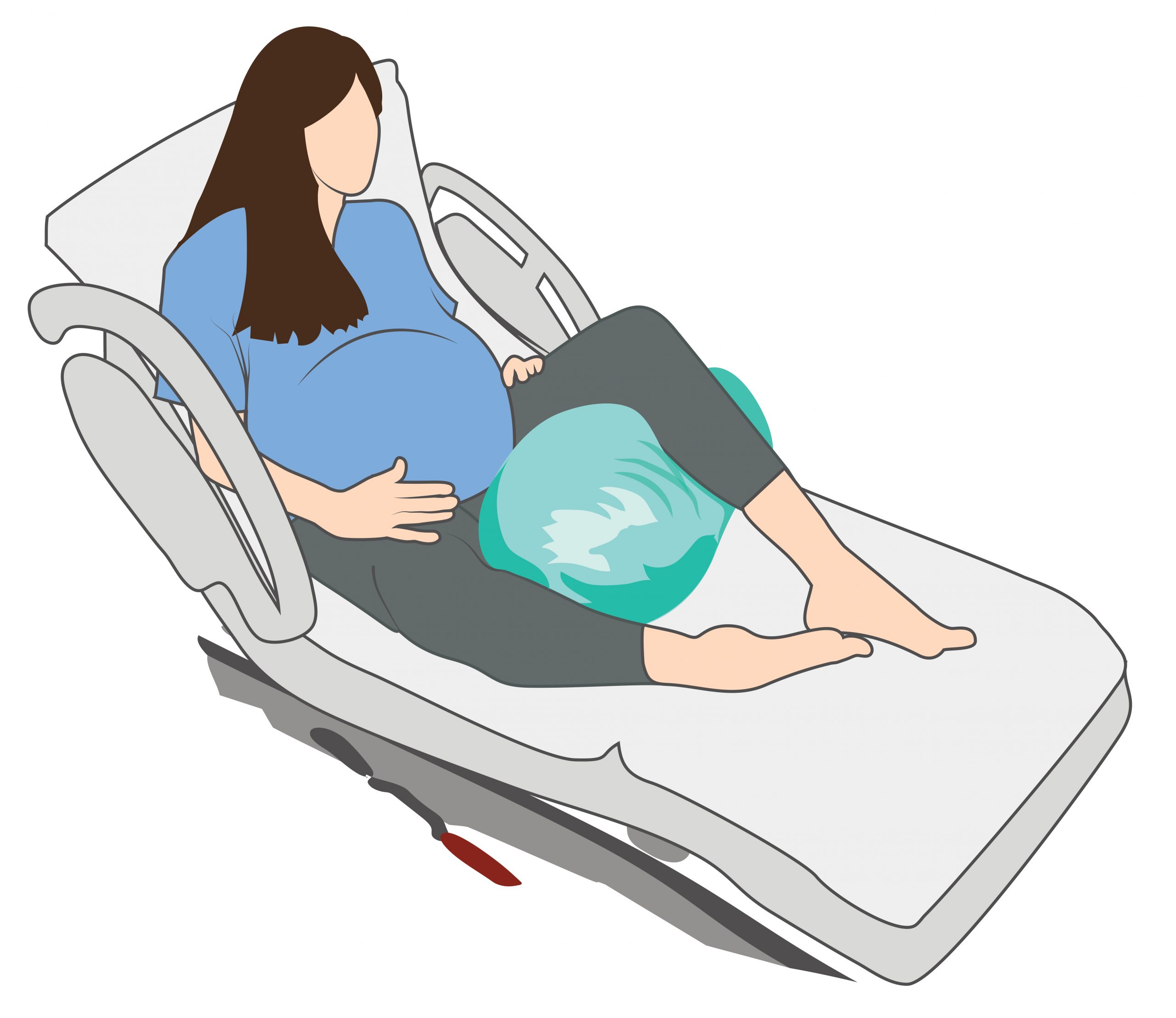
Before using a peanut ball for position number 1, please consult your midwife first, if it makes sense to do so, given the current position of your baby in your pelvis!
Remember: the reason why you adopt these different positions is to support your baby’s descent in your pelvis!
How your Birth Partner can support you during the Roll-over
First of all, it is important to understand that you cannot adopt these positions without assistance! Ideally, your midwife assists you to get in and out of the positions.
However, your midwife might explain your birth partner how to assist you with the position changes so that your birth partner can do it the next time you change your position.
Even more important though, are the many ways your birth partner can assist you WHILE adopting the positions.
Position one is perfect for acupressure, reflexology or a head massage.
Position two and six are great positions for acupressure (just focus on one side of the body only, i.e. the upper part).
Position three and five are great positions for a back massage or a traditional foot massage.
Position four is a great position for hip squeezes, massages of the sacrum as well as acupressure on points which are located along the sacrum.
Let your Midwife guide you!
Please keep in mind that you should always double-check with your midwife, if these positions are right for you given your particular case (as well as the current position of your baby in your pelvis)!
Also, please note that the roll-over technique is only suitable for the first stage of labor, which is the dilation phase. However, it is not suitable for the second stage of labor, which is the pushing phase.
Sources
Simkin, Penny; Hanson Lisa and Ancheta, Ruth (2017): The Labor Progress Handbook: Early Interventions to Prevent and Treat Dystocia. Fourth Edition. John Wiley and Sons.
Medical Disclaimer: The information on this page is not intended to diagnose, prevent, mitigate, treat or cure any disease! It is not personal medical advice. We recommend that you ask a doctor whenver you are looking for medical advice!
ABOUT THE AUTHOR
Nathalie Kaufmann & Mathias Ritter
Nathalie is a pregnancy and birth Consultant and a TCM Therapist with almost 20 years of experience in Traditional Chinese Medicine (TCM), acupuncture, reflexology, Shonishin baby massage techniques, Western and Eastern massage techniques (including TUINA), as well as herbal medicine and nutrition.
She has worked in hospitals across London and was Head of the Maternity Acupuncture Clinic at the Whittington hospital in London. Today, Nathalie runs her own practice in London and helps pregnant women with pregnancy- and birth-related issues. She also specializes in alternative treatments for babies and children.
Mathias is a Researcher and Science Geek who holds two Master of Science degrees. He has been involved in several health-related businesses over the past 10 years and has held presentations about health-related topics across Europe. He specializes in research regarding pregnancy-, birth and baby-related topics.
RELATED POSTS
How to increase the Oxygen Supply to the Baby in the Womb
During your pregnancy, there is a constant supply of oxygen to your baby. But what pregnant women often don’t know is that there are certain things that can reduce the oxygen supply to the baby. Luckily though, there are also very simple ways to increase the oxygen...
Best sitting Position to help Baby find a good Position in the Womb
As they approach the end of their pregnancy, many moms-to-be start to worry. How should they help baby find a good position for labor? What about turning baby head down? What if baby is posterior? And how should I help baby engage in my pelvis?So, how can you help...
Pregnancy Vitamins: What Nutrients does a Fetus need & what Foods should I eat?
This blog post adds to our video on youtube in which we go through our list of the 9 most important micronutrients every fetus needs. If you have not watched our video so far, we recommend doing that first:Below, you can find a list of all the nutrients that we...
How to keep track of Baby’s Movements
If your baby is active in your womb, then it is a sign that your baby is well. Because of that, most doctors recommend counting your baby's kicks from week 28 of your pregnancy onwards. In this brief blog post, we want to explain how you can keep track of your baby's...
How to relieve Pelvic Girdle Pain during Pregnancy
This blog post complements the information from our video on youtube on how to relieve pelvic girdle pain during pregnancy. In that video, we propose 2 ways to relieve pelvic girdle pain: 1. some minor changes in your lifestyle and 2. exercises. While the video...
Are you a good candidate for VBAC?
This blog post is intended to provide additional information apart from what we have mentioned in our video with the title "are you a good candidate for VBAC?" Moreover, on this page, you can find the entire list of scientific research studies which this video is...
The Purple Line – Find Out If You Are Dilating
The purple line can tell a woman if and how much she is dilated. So in this blogpost, we explain how to find out if you are dilating and how much you are approximately dilated.
How Effective Is Reflexology to Induce Labor?
Many women in their late pregnancy hope that reflexology can help them induce labor naturally. And indeed, reflexology is ONE of the tools that I apply to help women go into labor.So, how effective is reflexology to induce labor? Reflexology could help you induce...
Best Sleeping Position To Turn A Breech Baby (with Pictures)
Most babies turn at night. But unfortunately, not every sleeping position provides the baby with enough room to turn. As a result, many babies remain in a breech presentation. Luckily though, sleeping in the right position can support baby turn head down.So, what is...
LEAVE A REPLY


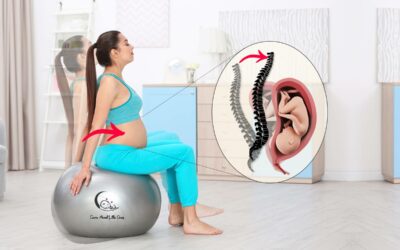




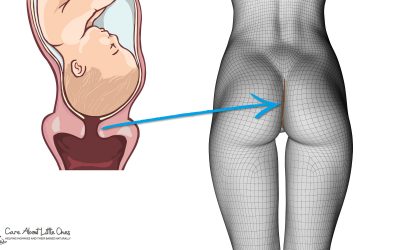

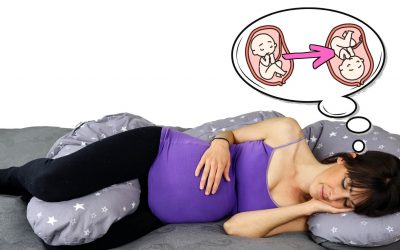
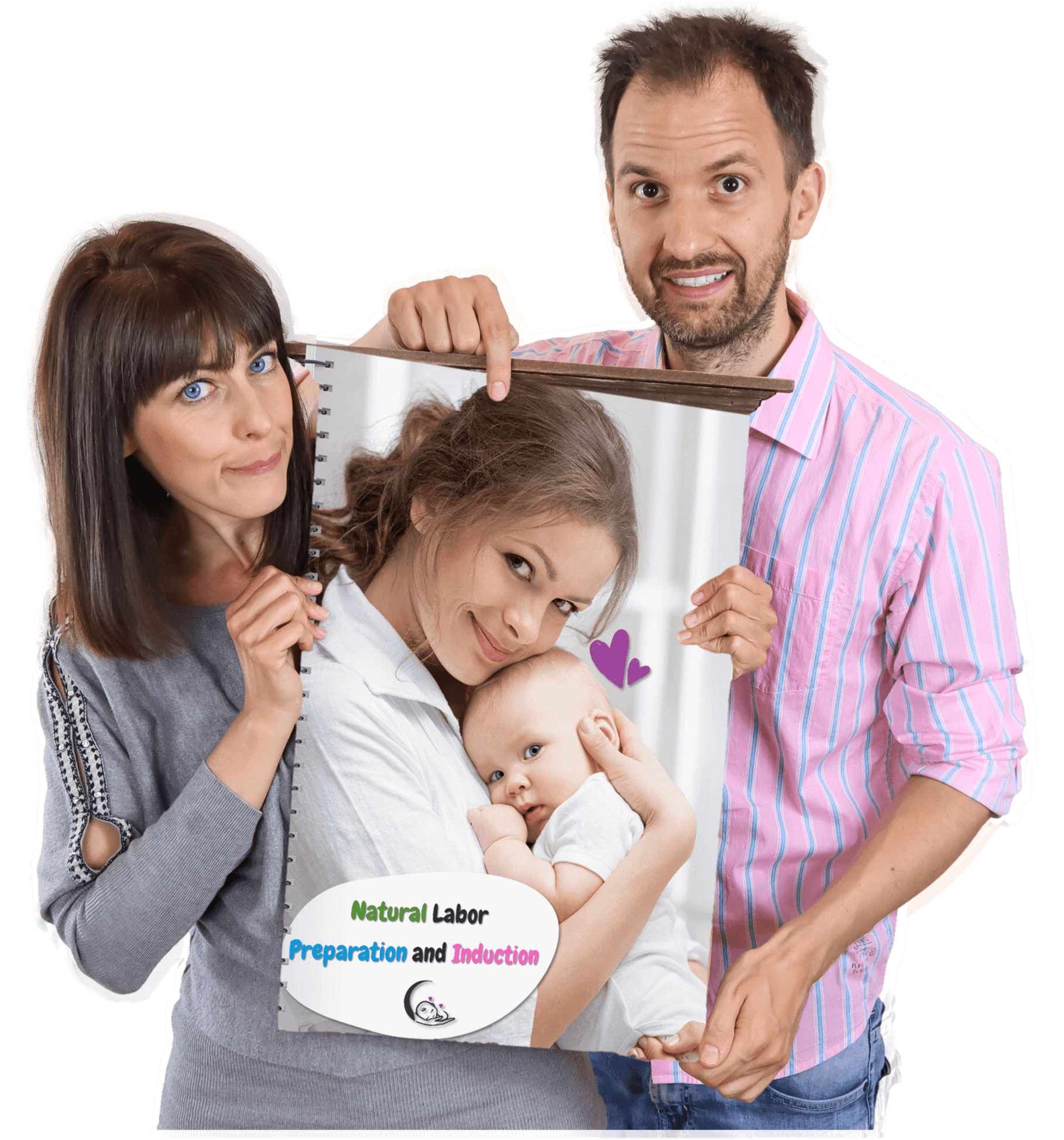
0 Comments